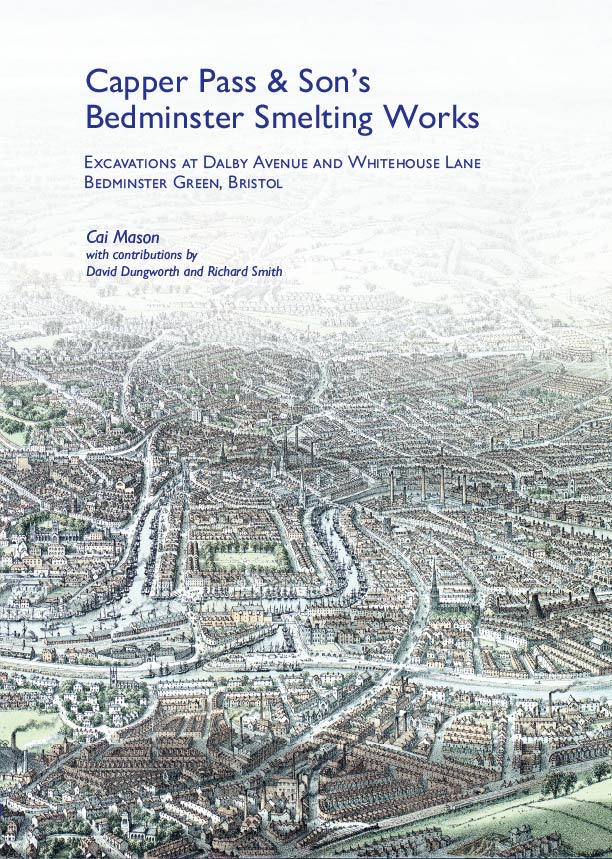Capper Pass & Son’s Bedminster Smelting Works: Excavations at Dalby Avenue and Whitehouse Lane, Bedminster Green, Bristol
Cai Mason

Description
Excavations ahead of the Metal Works development in the Bedminster district of Bristol provided an opportunity to investigate a specialist non-ferrous smelting works that flourished during the Second Industrial Revolution of 1870–1914.
The company originated as a backyard operation run by the eponymous Capper Pass in late 18th- and early 19th-century Walsall, Birmingham and Bristol. Small and unreliable profits led Pass to dabble in criminality, something that resulted in his permanent transportation to Australia in 1819. The family’s fortunes were revived by his son and namesake Capper Pass II, who in 1840 established a new smelting yard in Bedminster. Although modestly successful, the business remained small until 1866, when he and his son Alfred Capper Pass discovered a product – solder – that produced reliable and increasingly large profits. As the company grew, adjacent streets were subsumed by the smelting works. Twentieth-century innovations, such as the use of electrorefining to process Bolivian tin ore, helped keep the company afloat during the inter-war period, but its location, hemmed in on all sides by streets of terraced housing, hampered further expansion. In 1937, the company opened a new works in Melton, Yorkshire, and in 1963, the Bedminster works closed.
Archaeological excavation has revealed complex and hitherto unknown details of the smelting works, including the remains of numerous buildings, furnaces and associated cellars and underground flues, and the remains of 19th-century terraced houses. Metallurgical and technological analysis has uncovered aspects of production processes, whilst artefacts and documentary records reveal evidence of global trading links, and how the smelting works affected the social makeup and development of Bedminster in the 19th and early 20th centuries.Details
| Published | Published By | Pages | ISBN | ||||||||||||||||||||||||||||||||||||||||||||||||||||||||||||||||||||||||||||||||||||||||||||||||
|---|---|---|---|---|---|---|---|---|---|---|---|---|---|---|---|---|---|---|---|---|---|---|---|---|---|---|---|---|---|---|---|---|---|---|---|---|---|---|---|---|---|---|---|---|---|---|---|---|---|---|---|---|---|---|---|---|---|---|---|---|---|---|---|---|---|---|---|---|---|---|---|---|---|---|---|---|---|---|---|---|---|---|---|---|---|---|---|---|---|---|---|---|---|---|---|---|---|---|---|
| Sept. 9, 2025 | Wessex Archaeology | 156 | 978-1-7391876-9-9 | ||||||||||||||||||||||||||||||||||||||||||||||||||||||||||||||||||||||||||||||||||||||||||||||||
| License Information | |||||||||||||||||||||||||||||||||||||||||||||||||||||||||||||||||||||||||||||||||||||||||||||||||||
| Copyright © Wessex Archaeology. This work is openly licensed via CC BY-NC-ND 4.0 | |||||||||||||||||||||||||||||||||||||||||||||||||||||||||||||||||||||||||||||||||||||||||||||||||||
